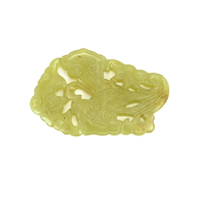FAQs on Jade Treatments
When purchasing or evaluating Jade, understanding the treatments it may have undergone is essential, which is why the FAQs on Jade Treatments are so important. These FAQs on Jade Treatments provide answers to common questions about the processes used to enhance the color, clarity, and durability of Jade. Whether you are curious about the impact of dyeing, bleaching, or polymer impregnation, the FAQs on Jade Treatments offer valuable insights that help you make informed decisions. By exploring these FAQs, you can ensure that you are fully aware of any treatments your Jade may have received, allowing you to appreciate its beauty while understanding its true value.

Unveiling the Mysteries: FAQs on Jade Gemstone Treatments
Jade, a symbol of purity and serenity, has been esteemed for its beauty and mystical properties for thousands of years. With its deep cultural significance, particularly in Asian traditions, jade is more than just a gemstone; it’s a piece of heritage. However, like many gemstones, jade can undergo various treatments to enhance its appearance and durability. This blog aims to address frequently asked questions regarding jade treatments, helping enthusiasts and buyers navigate the complexities of this ancient stone.
What Are the Common Treatments Applied to Jade?
Jade, particularly jadeite, can undergo several treatments to enhance its color, clarity, and overall appearance. The most common treatments include:
- Dyeing: Introducing color to improve or change the stone’s hue.
- Bleaching: Removing impurities or unwanted colors, often followed by impregnation with polymers.
- Polymer Impregnation: Filling microscopic cracks and improving clarity and color.
- Waxing: Applying a wax coating to enhance surface luster and appearance.
Why Is Jade Treated?
Jade treatments are primarily aimed at enhancing the aesthetic qualities of the stone. Treatments can intensify color, improve translucency, and repair minor imperfections, making the gemstone more appealing to the market. While purists may prefer untreated jade for its natural beauty and rarity, treated jade can make this coveted gemstone accessible to a broader audience.
How Do Treatments Affect the Value of Jade?
Treated jade is generally less valuable than its untreated counterparts, with the degree of treatment impacting its market value. For instance, lightly waxed jade might still retain considerable value, while heavily dyed or polymer-impregnated jade would be considered less desirable by collectors. Transparency regarding treatments is crucial; a treated piece with disclosed enhancements can still be valuable, especially if the treatment improves its durability without compromising its natural beauty.
K1557| play |medium| right| “133.51 Ct. Jade from Burma”
Can Treated Jade Be Distinguished from Untreated Jade?
Distinguishing treated from untreated jade can be challenging without the proper equipment and expertise. However, there are indicators that may suggest treatment, such as unnaturally vivid colors, a plastic-like sheen, or an absence of natural inclusions. Purchasing from reputable dealers who can provide treatment disclosures and certifications from recognized gemological institutes is always recommended.
Are There Any Specific Care Instructions for Treated Jade?
Treated jade may require special care depending on the type of treatment it has undergone. For example:
- Dyed Jade: Avoid prolonged exposure to sunlight and harsh chemicals that could fade the color.
- Polymer-Impregnated Jade: Be cautious of heat and solvents that can dissolve the filler material.
- Waxed Jade: Keep away from high temperatures and solvents that can strip the wax coating.
Always use mild soap and lukewarm water for cleaning, and avoid ultrasonic cleaners unless you are certain the jade has not been treated.
Is Treated Jade Considered Authentic?

Yes, treated jade is still considered authentic jade. The key factor is transparency regarding the treatments it has undergone. Knowledgeable sellers and certifications can help assure buyers of the gemstone’s authenticity and the nature of any enhancements.
While the allure of untreated jade remains unparalleled for many, treated jade offers an accessible alternative that can possess its own unique beauty. Understanding the treatments and their implications on value and care can empower buyers to make informed decisions that align with their preferences and values. Whether treated or untreated, jade continues to captivate with its timeless charm and cultural significance, embodying the essence of nature and human craftsmanship.
Uncover the secrets behind Jade’s captivating beauty in our in-depth guide on the Treatments and Enhancements of Jade!
